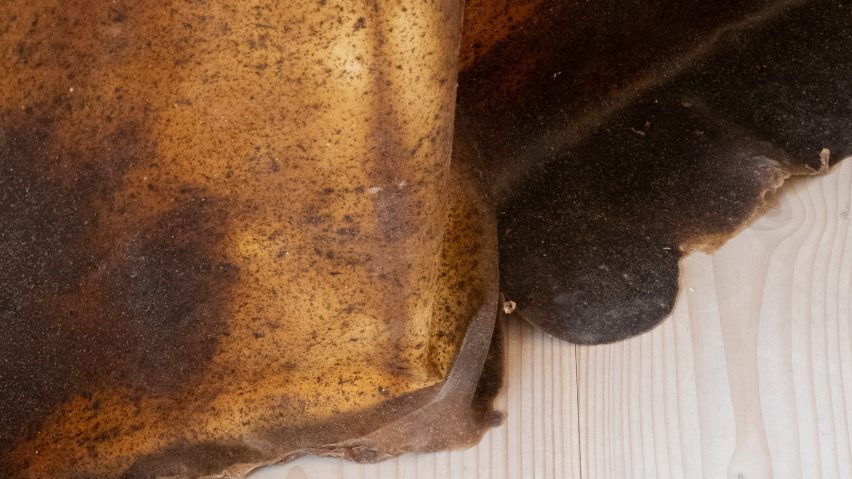
Natural Material Studio turns wood offcuts into biomaterials to "utilise the whole tree"
Danish firm Natural Material Studio has created four biomaterials out of sawdust salvaged from the sawmill of flooring manufacturer Dinesen to explore the potential of using wood waste to make building materials.
The biomaterials are showcased in the gallery space of the Dinesen showroom in central Copenhagen via an "architectural installation" called Smuld – meaning "sawdust" in Danish – designed in collaboration with local practice Office Kim Lenschow.
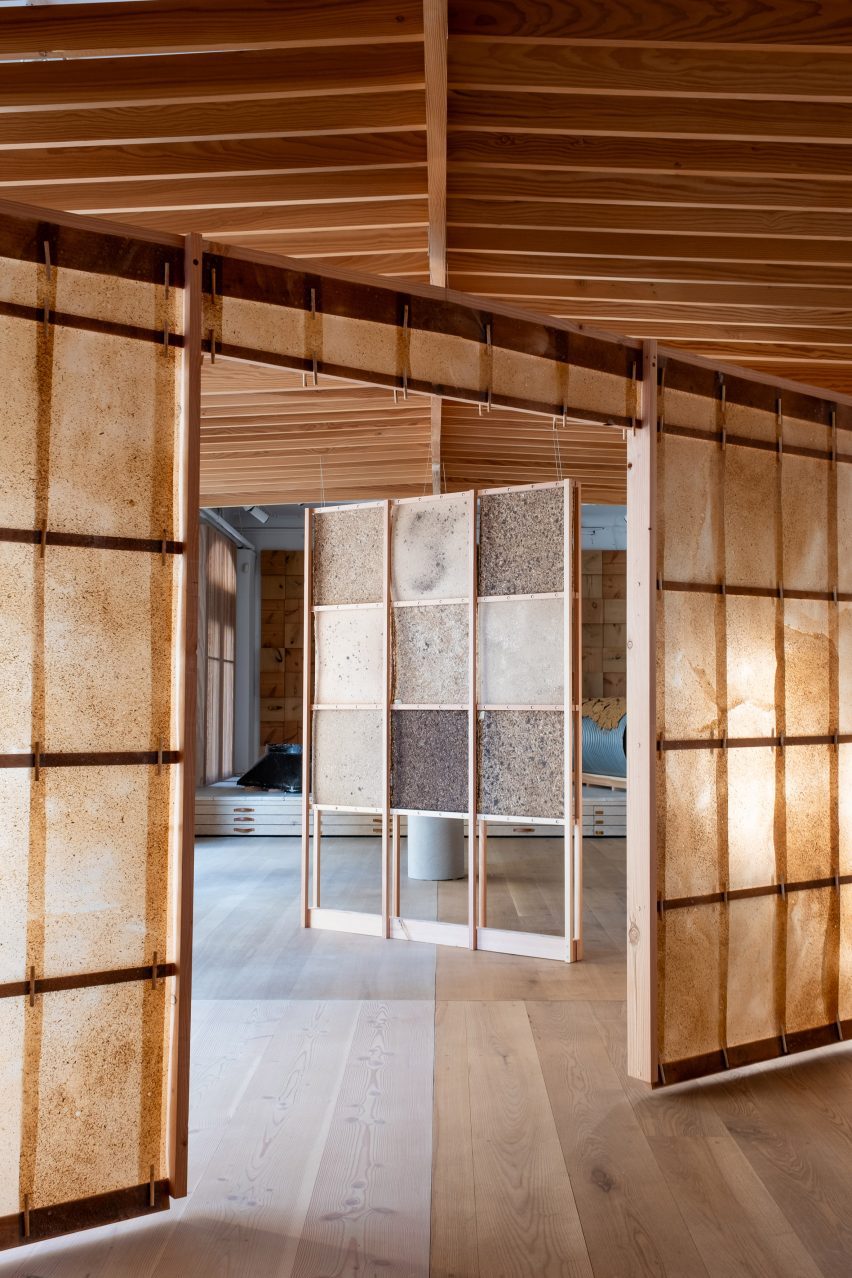
The installation features four brown-hued materials made of a combination of sawdust and natural wood binders arranged as chunky geometric "portals" mounted on timber frames.
Natural Material Studio used a range of sawdust, from fine dust to chunkier wood chips, leftover from production at Dinesen's sawmill in Jels, Denmark.
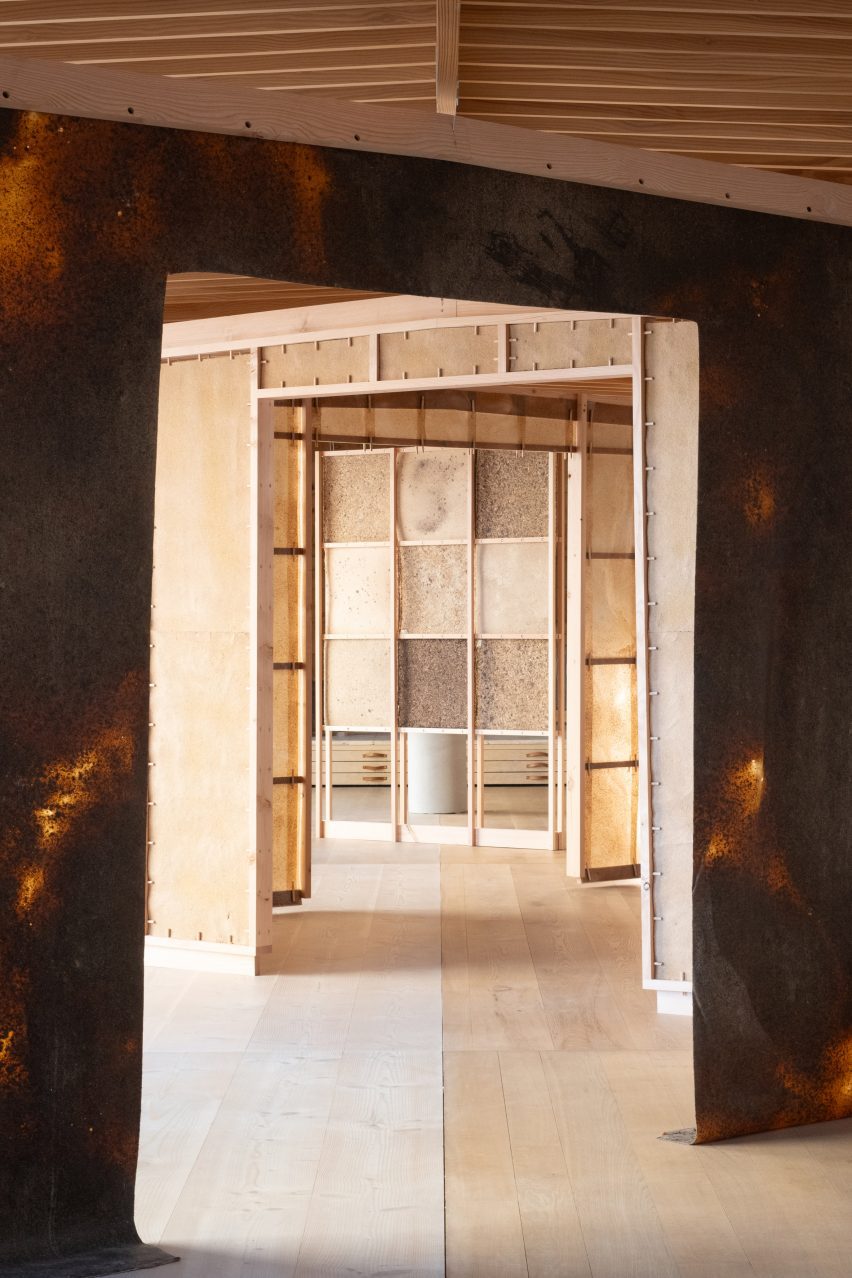
"It makes sense to utilise the whole tree and to build value into the residue so that we stop thinking there is a difference between the premium wood and the discarded parts," said studio founder Bonnie Hvillum.
"It's really about designing systems for all parts of the raw tree – from the bark to the core planks," she told Dezeen.
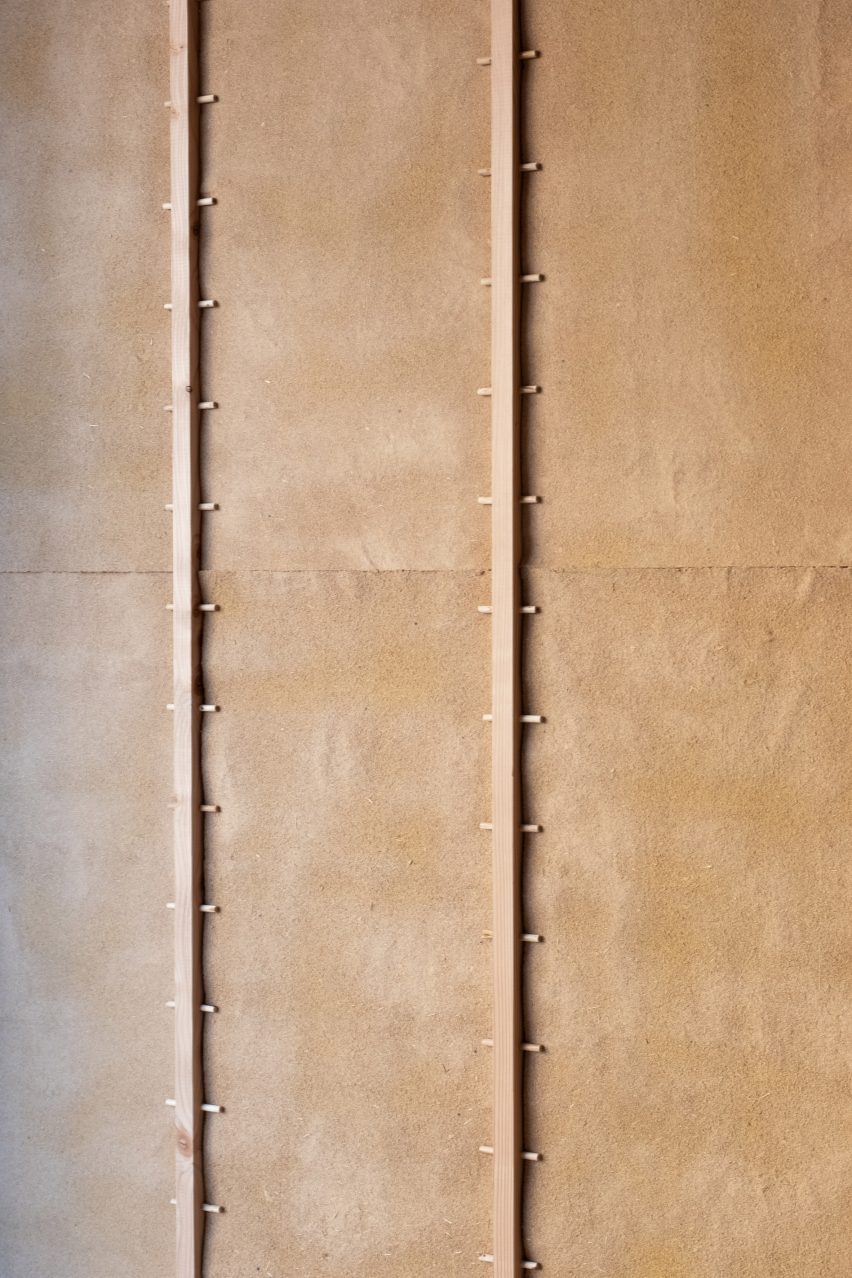
The first material is a flexible textile made from a mixture of finely sifted wood plaster and planer shavings, which the studio cast with natural latex derived from the rubber tree.
To make the second material, the team plastered fine sawdust and cellulose onto wood fibre boards to form insulation.
"The material opens up the possibility of optimising wall layering, both functionally and aesthetically," said Hvillum.
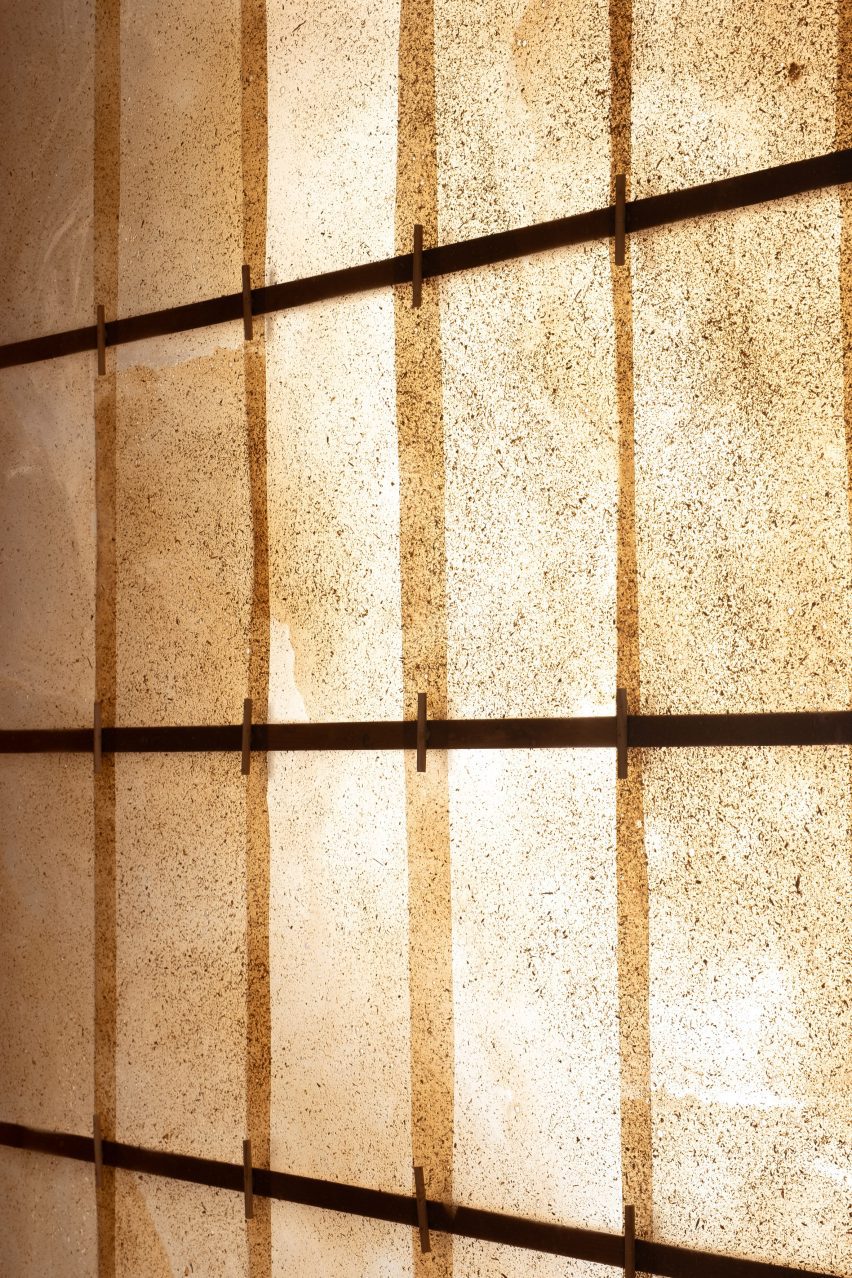
Delicate, semi-translucent Japanese shoji screens informed the third material, which also pairs finely sifted wood plaster and planer shavings. The studio cast this combination into paper-thin, caramel-coloured sheets.
The fourth material is the studio's "first attempt" at creating a structural wood fibre panel for architectural use. It is held together with a binder made of lignin – the organic polymer that gives wood its strength and rigidity – developed in collaboration with the Danish Technological Institute.
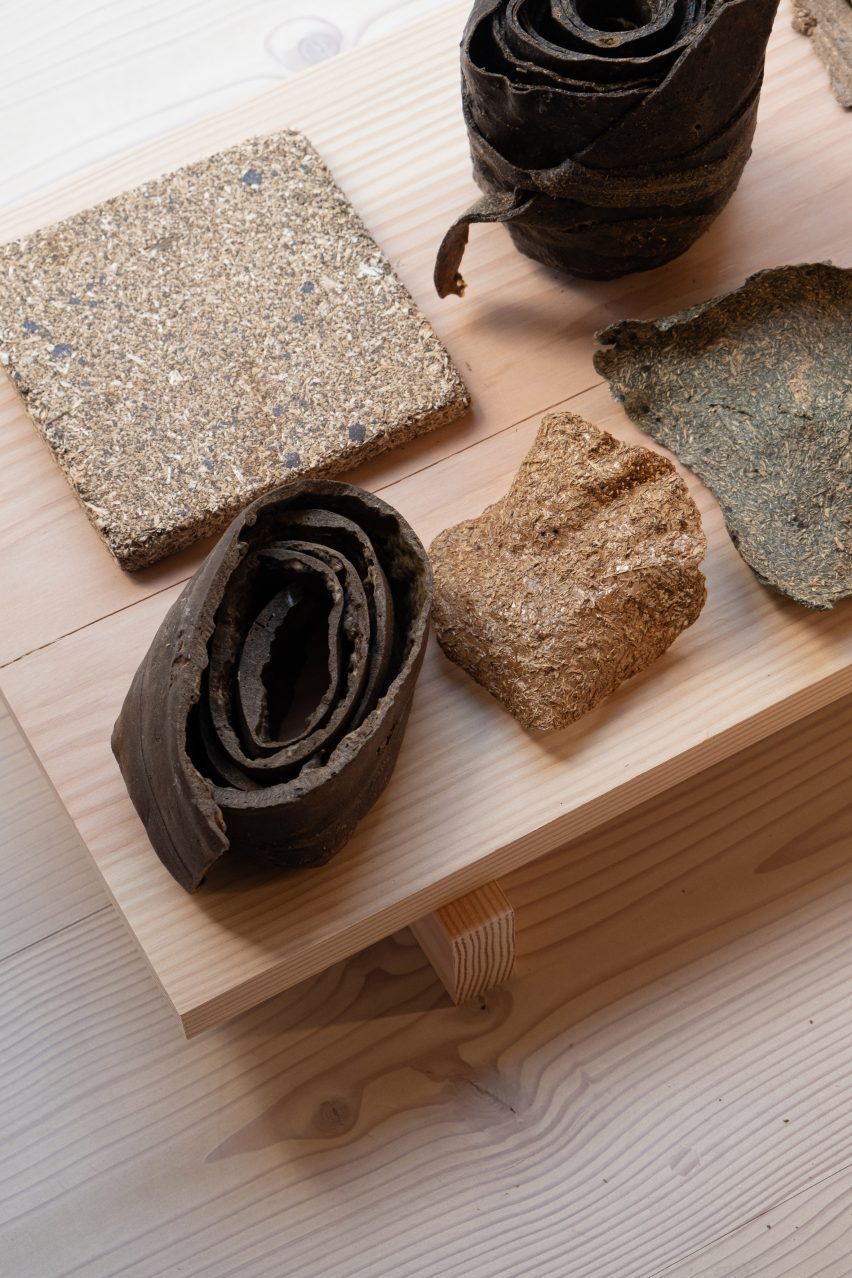
"The binders we have used are based on biopolymers that come from the tree itself," explained Hvillum.
"Lignin and cellulose are strong tissue cells that form the structure of a tree and can be extracted to be used in human-made material compositions."
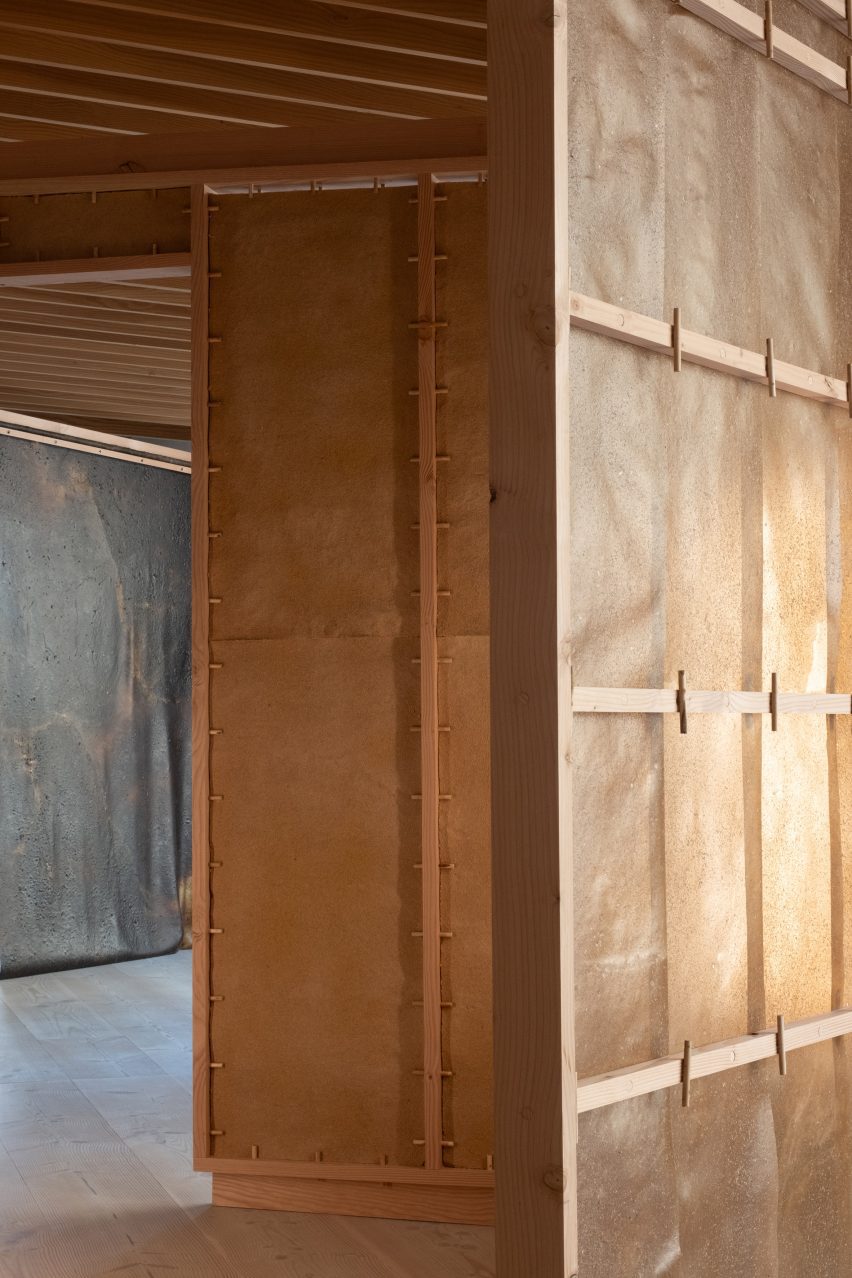
Natural Material Studio used three methods to combine the sawdust with the natural binders – fluid casting in moulds, pressure forming with heat and creating a kind of render to be spread directly onto the surface of other materials onsite.
This enables the offcuts to become functional building materials despite their short fibres.
"The sawdust fibres aren't that long and some of the residue is literally saw flour, which doesn't act as reinforcing at all," said Hvillum.
The varying molecule lengths of the wood polymers, which are shorter than those of synthetic polymers, will dictate how long it takes for each material to biodegrade, according to Hvillum.
"Wood has so many opportunities with its complex biological build-up," she said.
"This is what can be called a material-driven process, letting the material possibilities drive the direction and usage [of a material]. In the end, it led us to four different materials with very different properties."
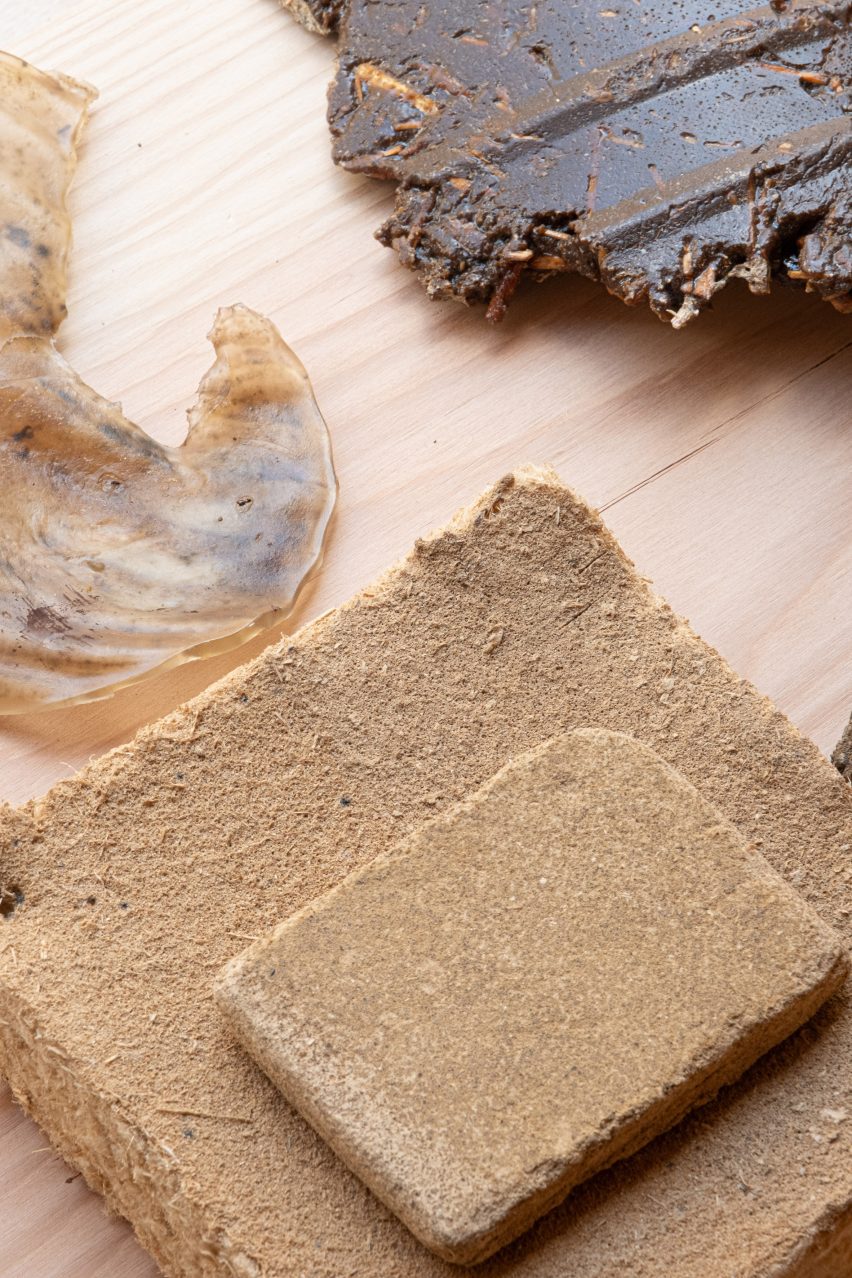
The materials were arranged as large-scale, interactive portals in the Dinesen showroom to encourage visitors to observe and compare their qualities.
Natural Material Studio has a varied portfolio of work, including crockery for a restaurant made from its leftover seashells and a futuristic fossil-free home interior installed during this month's 3 Days of Design festival, which is the studio's most ambitious project to date.
The photography is by Nikolaj Bonde.
Smuld is on display at the Dinesen showroom, Søtorvet, 5, 1371, Copenhagen, from 26 April to September 2024. See Dezeen Events Guide for an up-to-date list of architecture and design events taking place around the world.